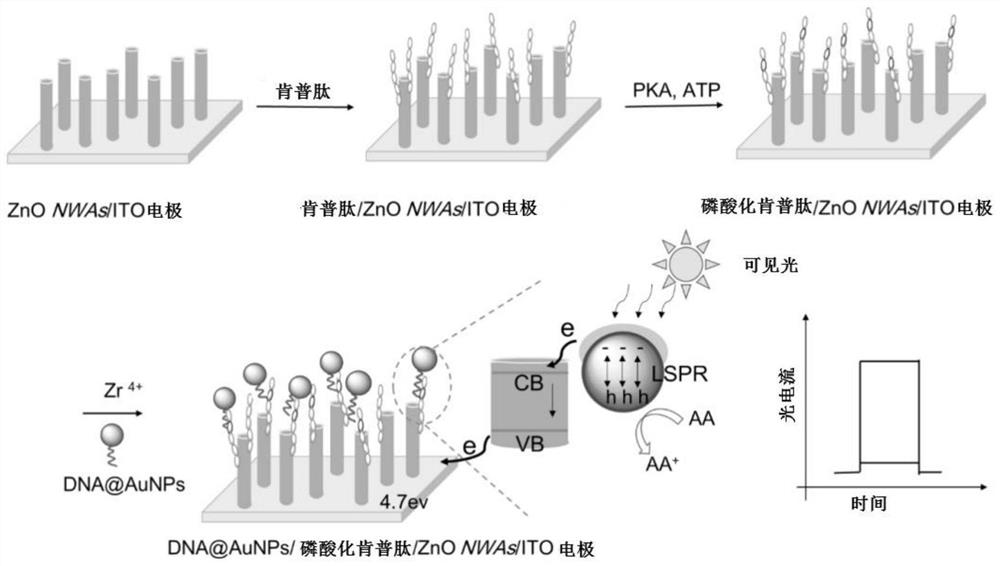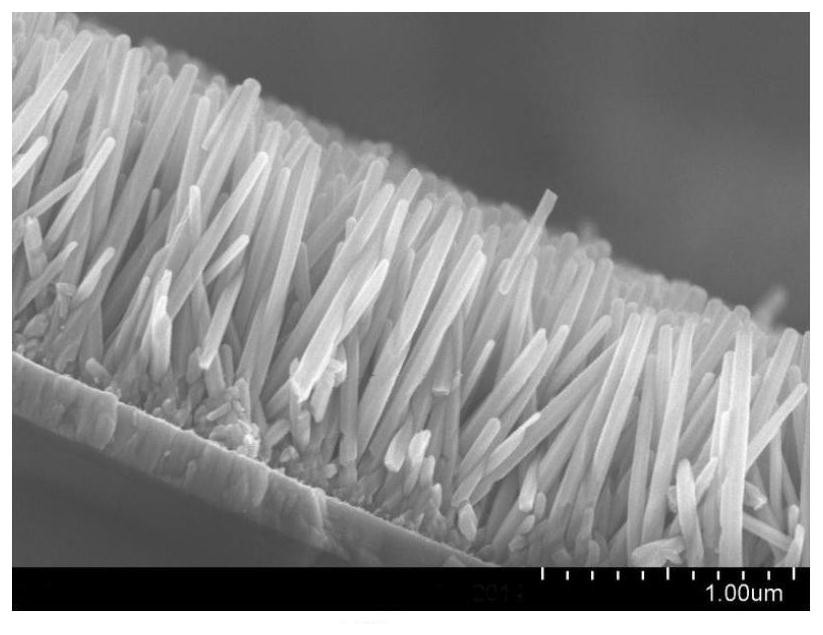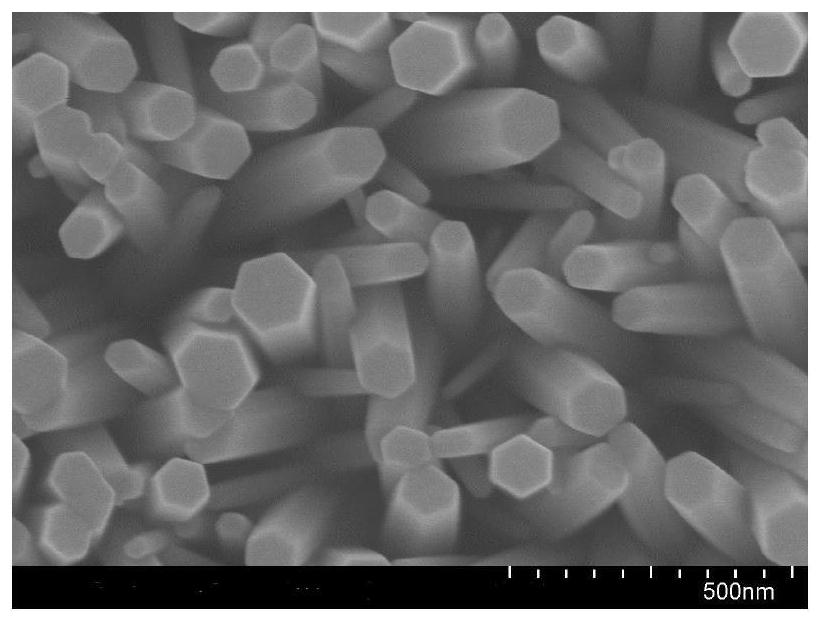Preparation method and application of photoelectric biosensor based on oxide nanoarray
A biosensor and nanoarray technology, applied in the fields of instruments, scientific instruments, material electrochemical variables, etc., can solve the problems of affecting the accuracy of detection results, low dye modification efficiency, and many non-specific adsorption, and achieve easy promotion and construction. Simple, affordable results
- Summary
- Abstract
- Description
- Claims
- Application Information
AI Technical Summary
Problems solved by technology
Method used
Image
Examples
preparation example Construction
[0063] In a preferred embodiment of the present invention, the present invention provides a method for preparing an oxide nanoarray, which includes the following steps: pretreating ITO or FTO glass, and then planting the seed solution on the ITO or FTO glass, Next, the ITO or FTO glass containing the seeds is placed in the growth solution corresponding to the oxide to continue growing, so as to obtain the oxide nano-array electrode.
[0064] In a preferred specific embodiment of the present invention, the present invention provides a method for preparing a DNA-modified noble metal nanoparticle probe, which comprises the following steps: DNA1 and DNA2 are hybridized, and then the hybridized DNA double The strands are added to the noble metal nanoparticle solution, and centrifuged to obtain DNA-modified noble metal nanoparticle probes.
[0065] When adopting the photoelectric biosensor prepared by the present invention to carry out the test, the light source used in the photoele...
Embodiment 1
[0072] Example 1 Preparation of photoelectric biosensor
[0073] (1) Synthesis of DNA-modified gold nanoprobes (DNA@AuNPs):
[0074] a. 100ml of 0.01% (w / v) chloroauric acid solution was stirred and heated to boiling, then 1% (w / v) sodium citrate solution was quickly added to the chloroauric acid solution, when the solution turned wine red, stop Heating and cooling to obtain gold nanoparticles (AuNPs);
[0075] b. DNA1: 5′-SH-C6-ATCGTTTAGGATTTGGATGA-P-3′ and DNA2: 3′-GCAAATCCTAAAC are respectively configured into 10 -6 M solution, hybridization incubation at 37°C, after the reaction is complete, add the hybridized DNA double strands into 1mL nano-gold solution, stir at room temperature for 24h, slowly add 150μL 1M sodium chloride solution, and place it for 24h, The mixed solution was centrifuged at 10,000 rpm for 15 min, and the supernatant was skimmed off to obtain DNA@AuNPs.
[0076] (2) Preparation of zinc oxide nanoarrays
[0077] The ITO glass was ultrasonically clean...
Embodiment 2
[0089] Example 2 Preparation of photoelectric biosensor
[0090] (1) The synthesis operation of DNA-modified gold nano-probes (DNA@AuNPs) is the same as in Example 1;
[0091] (2) Preparation of titania nanoarrays
[0092] The FTO glass was ultrasonically cleaned in acetone, sodium hydroxide (1M) ethanol water (1:1v / v) solution, and water for 15 minutes, then placed in an oven at 90°C for 12 hours, and dried for later use;
[0093] With 35mL of diluted concentrated hydrochloric acid (concentrated hydrochloric acid: water = 1:1) as a solvent, add 1mL of tetrabutyl titanate dropwise under the condition of magnetic stirring, stir for 20min and then add it into a polytetrafluoroethylene reaction kettle, FTO The glass was placed vertically against the wall in a polytetrafluoroethylene reactor, and then the reactor was placed in a vacuum box at 150°C for 4 hours, and then the electrode was taken out, washed with water, and dried at 60°C to obtain a titanium oxide nano-array electro...
PUM
 Login to View More
Login to View More Abstract
Description
Claims
Application Information
 Login to View More
Login to View More - R&D
- Intellectual Property
- Life Sciences
- Materials
- Tech Scout
- Unparalleled Data Quality
- Higher Quality Content
- 60% Fewer Hallucinations
Browse by: Latest US Patents, China's latest patents, Technical Efficacy Thesaurus, Application Domain, Technology Topic, Popular Technical Reports.
© 2025 PatSnap. All rights reserved.Legal|Privacy policy|Modern Slavery Act Transparency Statement|Sitemap|About US| Contact US: help@patsnap.com



